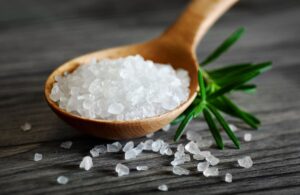
In January-September 2024, Ukraine exported 64.913 thousand tons of honey for $124.817 million, which is 1.7 times and 44.3% more than in the same period of 2023, respectively.
According to statistics released by the State Customs Service (SCS), Germany became the largest buyer of Ukrainian honey, purchasing 22.13% of total exports worth $27.627 million in January-September 2024.
The United States and France accounted for 16.1% and 11.7% of supplies, for which these countries paid $20.139 million and $14.63 million, respectively.
A year earlier, the top three buyers of Ukrainian honey were Germany with a share of 24.9%, Poland and France with 16.0% and 7.32%, respectively. Ukraine earned $21.5 million, $13.88 million, and $6.332 million from the sale of honey to them, respectively.
In January-September 2024, Ukraine increased honey imports by 36.1% to 200 tons, for which it paid $105 thousand. Its suppliers were Poland and Bosnia and Herzegovina, which supplied 75 tons (37.5%) each, as well as Romania, which accounted for 22% of supplies with 44 tons.
A year earlier, Ukraine imported 122 tons of honey exclusively from Poland.
As reported, Ukraine has been among the world’s top five honey exporters for several years. In 2023, Ukraine ranked fourth among the traditional world leaders in honey exports with 55.4 thousand tons. In this ranking, it is ahead of China with 152.6 thousand tons, India with 98.7 thousand tons, Argentina with 68.9 thousand tons, and Brazil with 28.5 thousand tons of honey.

The share of imported salt in the Ukrainian market in January-June 2023 reached 15%, 211.737 thousand tons were purchased on foreign markets for $46.196 million.
According to statistics released by the State Customs Service (SCS), the largest supplier of salt to Ukraine remains Turkey, which provided 32.4% of all salt imports in the first half of 2023 and earned $14.966 million.
Egypt and Romania accounted for 23.3% and 17.7% of shipments, for which these countries earned $10.745 million and $8.174 million, respectively.
A year earlier, the top three importers of Ukrainian salt were Turkey with a market share of 29.8% of supplies, Poland and Romania with 22.8% and 19.8% respectively. Their revenue from its sale amounted to $7.492 million, $5.722 million and $4.969 million, respectively.
The State Customs Service recalls that in 2022, the share of imported salt in the domestic market totaled 15%. On foreign markets Ukraine purchased 438.105 thousand tons of salt for the amount of $92.116 million.
In 2021, the level of imported salt in Ukraine did not exceed 2%, which amounted to 142.813 thousand tons at $12.920 million.
For export in this pre-war year, Ukrainian enterprises supplied 710.041 thousand tons of salt, from the sale of which they received $28.323 million.
In 2022, Ukraine reduced salt exports by 80% to 142.038 thousand tons compared to 2021, with revenues of $3.821mn.
The main buyers of Ukrainian salt in 2021 and 2022 were Poland (import share of 39.1% and 44.4%, respectively), Hungary (27.4% and 27.3%) and Romania (7.3% and 5.1%).
In the first half of 2023, exports of Ukrainian salt amounted to only 149 tons at $32 thousand. It was bought by Romania (93.5% of supplies) and Moldova (3.2%).
Earlier, the analytical “Club of Experts” analyzed the situation with export and import of salt in Ukraine, for more details see the link

Ukraine in January-June this year increased exports of pig iron in physical terms by 26.1% compared to the same period last year – up to 799.692 thousand tons. According to statistics released by the State Customs Service (SCS) on Monday, during the period, pig iron exports in monetary terms amounted to $309.146 million (down 7.9%).
At the same time, exports were mainly to Poland (66.02% of shipments in monetary terms), Spain (15.82%) and the Czech Republic (8.13%).
For six months of 2023 Ukraine imported 37 tons of pig iron for $52 thousand from Germany (61.54%) and Brazil (38.46%), with no imports of pig iron in June.
As reported, Ukraine in 2022 reduced exports of pig iron in physical terms by 59% year-on-year to 1 million 325.275 thousand tons, in monetary terms by 61.1% to $638.774 million.
In 2022, Ukraine imported 40 tons of pig iron worth $23 thousand, while in 2021 – 185 tons of pig iron worth $226 thousand.
Exports were mainly to the USA (38.47% of shipments in monetary terms), Poland (32.91%) and Turkey (8.12%), imports – from Germany (100%).

India, the world’s largest importer of edible vegetable oils, expects to receive the first batches of sunflower oil from Ukraine from September after a five-month break caused by the Russian invasion and the blockade of Ukrainian seaports.
According to Bloomberg’s website, citing Indian agricultural trader Sandip Bajoria, India may receive 50-60 thousand tons of sunflower oil in September, as Ukraine is going to open some corridors of the Black Sea for the export of agricultural products from the ports of Odessa and Chernomorsk.
“We have begun to receive offers for August deliveries, but everything will depend on the availability of ships. Ukraine has sufficient reserves of oilseeds for processing,” the trader is quoted as saying.
Sunflower oil imports to India from Ukraine have been suspended since April as the Russian invasion disrupted the country’s trade, he said.
“The Indian government’s decision to allow duty-free imports of 2 million tons of sunflower oil annually this fiscal year and next will support demand. India purchased 1.89 million tons of crude sunflower oil in the year ending October, with Ukraine supplying almost 74%, and Argentina and Russia – about 12%,” the publication clarified in the message.
As reported with reference to the Deputy Minister of Economy – Trade Representative of Ukraine Taras Kachka, in the 2021/2022 marketing year (MY, July-June), the country exported 61.52 million tons of grain and oilseeds worth $22.2 billion.
During this period, foreign markets were supplied, including 4.3 million tons of sunflower oil worth $5.8 billion, 3.4 million tons of sunflower meal worth $960 million, 421 thousand tons of soybean meal worth $230 million, 1.1 million tons of soybeans for $641 million, 2.7 million tons of rapeseed for $1.7 billion and 1.09 million tons of sunflower for $616 million.

The UNIT.City innovation park, together with the official importer of BMW and MINI in Ukraine AWT Bavaria, are launching the U.Go service – a new model of short-term rental (car sharing) of electric vehicles for the park residents, the press service of the importing company reported.
UNIT.City is reportedly serving as a testing ground for this pilot project, and Kyiv is the first city to test the new car-sharing model.
The service can now be used by residents and employees of the UNIT.City park, who have a driver’s license and have more than two years of driving experience.

Some 7.9% of Ukrainian exporting enterprises face obstacles in their activities, according to a survey by the Institute for Economic Research and Policy Consulting.
The rate in 2020 is the lowest since 2016, according to the study. In 2018, some 23.6% of exporters faced obstacles, while 19.3% in 2017 and 26.9% in 2016.
Large and small businesses (10.4% and 10.7%) more often report impediments to export compared to micro (8.1%) and medium (4.1%). Most often, they deal with obstacles in the implementation of exports by enterprises in the service sector (22.6%).
In Chernivtsi, Ternopil, Zhytomyr, Donetsk regions, there are no complaints about the presence of obstacles. Most often, such are reported by exporters from Rivne (22.2%), Ivano-Frankivsk (20%), Kirovohrad (20%), Sumy (20%), Poltava (18.8%) regions.
The main obstacles to export are the absence of simplified rules for determining the origin of goods (20.4%), a long wait for export clearance at customs (20.4%).
Among importers, 18.9% of the surveyed enterprises stated that they faced obstacles to their activities. This figure is also the lowest in all waves of the study since 2016. Some 28.4% of importers faced obstacles in 2018, some 29.3% in 2017 and 35.2% in 2016.
Cherkasy region is the only region where there are no complaints about import obstacles. Enterprises in Mykolaiv region most often point to impediments to imports (35.7%, every third respondent).
According to the respondents, the main obstacle to import is a lack of transparency in determining the customs value of goods that are imported (38.7%). Almost a third complain about the complexity of customs and tax legislation (32.4%). The third place in the rating of obstacles is taken by high rates of customs payments (27.5%).
The survey was conducted in 2020 by the civil society initiative “For Fair and Transparent Customs” with the support of the European Union, the International Renaissance Foundation and Atlas Network. More than 1,000 representatives of enterprises were interviewed: from micro-enterprises to large enterprises engaged in export and/or import. Most of the respondents are micro and small enterprises, representatives of industry and trade.